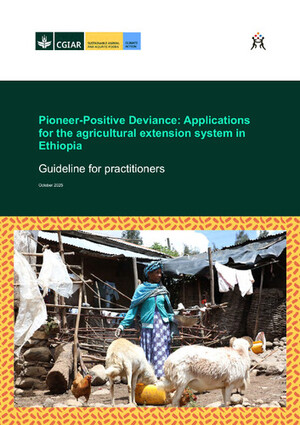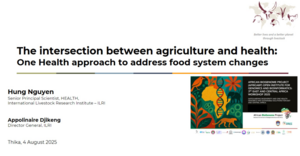
Workshop inaugurates surveillance project on human and animal diseases in Kenya
A variety of zoonotic diseases afflict Kenyan livestock and the people who raise them. Using a modified prioritization tool developed by the Centers for Disease Control and Prevention, experts in human and animal health in 2015 identified five priority zoonotic diseases in Kenya: anthrax, trypanosomiasis, rabies, brucellosis and Rift Valley fever.
Recently, a consortium of Kenyan and international institutions launched a three-year surveillance project on three of those five priority zoonotic diseases with an inaugural workshop held on 3 September 2019, in Nairobi, Kenya.
The three diseases are Rift Valley fever, brucellosis and Q fever. Rift Valley fever is a viral disease that primarily affects animals but can infect humans who come into contact with the blood or organs of infected animals or who consume poorly cooked meat and milk from these animals. According to the World Health Organization, outbreaks of Rift Valley fever are not uncommon in Kenya. Brucellosis is endemic in many areas of Tanzania and Kenya and in humans. Studies by scientists at the International Livestock Research Institute (ILRI) and other Kenyan institutions have found that brucellosis may be over-diagnosed in Kenya; nevertheless, it remains one of the most common zoonoses worldwide. Although it is highly infectious, Q fever is by contrast relatively uncommon and sometimes described as a neglected zoonotic disease.
The project was developed jointly by ILRI, the Kenya Department of Veterinary Services, the Kenya Ministry of Health, the Washington State University, the Los Alamos National Lab in the US, the Kenya Medical Research Institute and the Kenya Wildlife Service.
The project will develop country risk maps for these diseases at the national level and support field-based bio-surveillance activities in selected counties in northern Kenya—specifically Isiolo, Marsabit, Wajir, Garissa and Mandera. The project will generate more data on the impacts of these diseases, especially in pastoral areas.
In addition, the project aims to determine the burden of these diseases and their co-infections in humans, livestock and wildlife in Kenya; build capacity on bio-safety and bio-security practices among animal and human health workers and researchers involved in the management these diseases; and strengthen the existing One Health partnerships for improved control of these and other diseases of security concern. The project will protect human and livestock in Kenya by improving existing measures for disease surveillance and response.
Some 40 or so animal and human health professionals, program leaders and government officials participated in the workshop. They identified roles that the project would play in supporting ongoing surveillance and control interventions.
Three broad issues emerged from the workshop discussions. First, there is a need to ensure that local communities are involved in the project from the beginning. For example, ILRI’s Bernard Bett spoke about the socio-economic and gender dimensions of the diseases and indicated the project would focus on exposure risks to the pathogens by incentivizing communities for improved disease surveillance. As several participants noted, participatory engagement is key to ensuring local buy-in, without which the project is unlikely to succeed.
Second, it is vitally important to build partnerships with county-level people and work through existing systems. Yussuf Abdi Gedi, the CEC for Agriculture, Livestock and Fisheries of Wajir County, said the project was sorely needed. There is no mechanism in place now for helping the counties work systematically toward disease surveillance and monitoring, he said. ‘Currently we work with various charities and well-wishers, who are very helpful, but don’t have a way of systematically monitoring diseases in real time. This project gives us the ability to help the pastoralist communities in our county respond to outbreaks in a timely and cost-effective way. That is more important now than ever, as these communities face drought and a continued loss of purchasing power’.
Third, the workshop participants stressed the need to understand local migration patterns and their impacts. Many of the target populations are pastoralists with complex land ownership and usage practices, and it can be difficult to properly work with them without appreciating their nomadic or semi-nomadic way of life.
Dieter Schillinger, ILRI’s deputy director general, attended the conference and said he was deeply impressed by the project’s commitment to One Health—to treating human and animal health risks as two sides of the same coin. ‘It’s a fantastic model’, he said, one that developed countries should emulate. ‘Too often in the West zoonotic diseases aren’t given priority until humans get infected. It’s more efficient and effective to control and respond to diseases in the animal surveillance phase’, he added.
The project is funded by the US Defense Threat Reduction Agency. It commenced in September 2019 and will last through 2022.
Download presentations from the workshop:



















